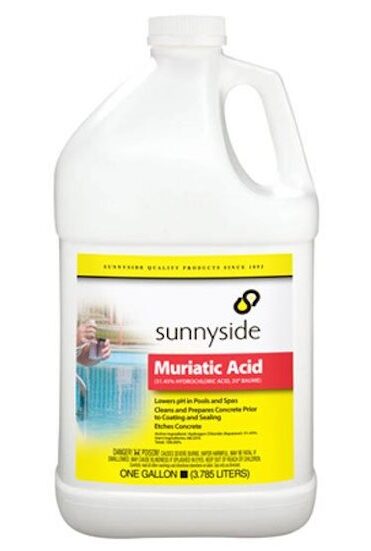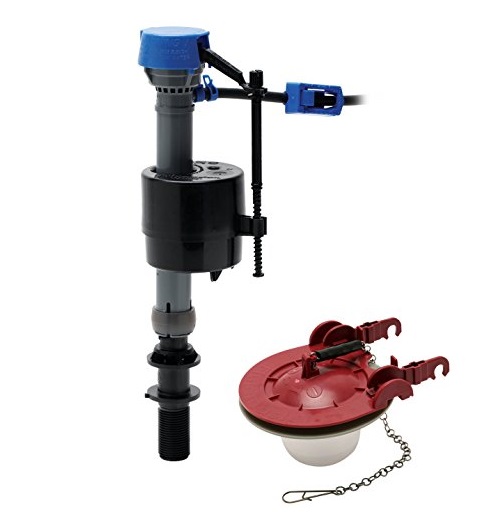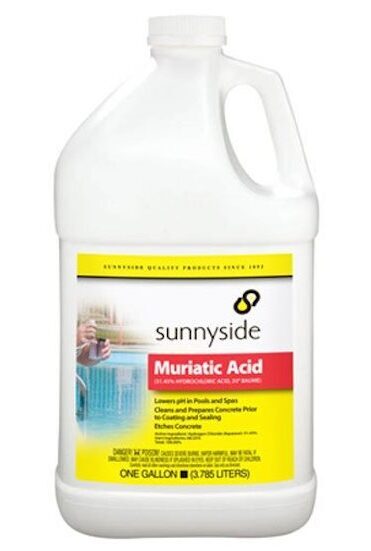How to Toilet Repair
Toilet Repair TIPS
- Partial Flush - flapper dropping too fast
- Phantom Flusher - toilet fills by itself
- Noisy Filler - sediment in filler valve
- Poor Flush - sediment clogging syphon jet or under-rim holes - see below for EASY DIY fix
- CLICK HERE to Get Tim's FREE & FUNNY Newsletter
Weak Toilet Flusher Solution - Easy Cheap Fix
Your weak flushing toilet could be a first-generation 1.6-gallon flush toilet that had horrible engineering. Look inside the tank for a manufacture date stamped in the clay. If it was made during the time period from January 1, 1994 to mid-1997, this could be the problem. No matter what you do, it will not flush right. You may need to install a new toilet.
Newer toilets built just before and after 1998 were much better and allowed the water to flow from the tank into the bowl faster. This is what produces a great flush.
You need LOTS of water to flow into a toilet bowl fast for a toilet to have a vigorous flush. That's why toilets in commercial buildings with a pressurized connection to the water supply system flush so well you think you'll be sucked into the sewer too!
If the toilet was made before 1994, hard water deposits in the siphon-jet hole at the base of the bowl or the angled bowl-rim swirl holes may be the source of your frustration. These deposits reduce the size of the openings and SLOW the flow of water from the tank to the bowl.
You can try to clean them out with wood sticks and oversized toothpicks, but a muriatic acid wash will really do the job.
Watch this video to see the siphon-jet hole and under rim holes:
Here's how to get the old toilet choked with hard-water deposits to flush like new:
- Pour four gallons of water AS FAST AS POSSIBLE into the bowl to get most water out of the bowl
- With water level low in the bowl, pour in pure muriatic acid into the bowl up to the normal fill level
- Allow acid to work for hours or overnight if possible - put lid down to keep pets safe - open a window for fresh air
- Neutralize acid by slowly adding small amounts of baking soda to the toilet bowl before you flush toilet
- Use a small wood stick to scrape soft deposits from the siphon-jet hole at bottom of bowl AFTER acid is flushed away
IMPORTANT NOTE: Muriatic acid is toxic. Read all safety warnings on the bottle. It will NOT HARM the toilet. If you neutralize it after it works for hours, it will NOT HARM the plumbing pipes nor city sewer system or your septic tank.

Muriatic acid is powerful and needs to be treated with lots of respect. CLICK THE IMAGE TO ORDER SOME NOW.
You should immediately hear fizzing and such. BE CAREFUL of the fumes! Run the bath fan, open a window. DO NOT splash this solution on you, in your eyes, on your clothes, on the carpet, etc. It will not hurt the toilet at all.
Septic System Harm?:
You may wonder if the muriatic acid will harm your septic system. The answer is NO if you neutralize it before flushing it out of the toilet.
Let the acid work for hours if possible.
After working to dissolve the hard water deposits, use small amounts of baking soda to neutralize the acid. Add the powder until you no longer see fizzing and bubbling.
Cleaning Toilet Bowl Rim Holes
Mix up a quart of acid and water solution. Mix it one part water to one part acid.
Pour this solution down the overflow tube as fast as you can using a large funnel. Do NOT splash this on you!
The solution you put down the overflow tube in the toilet tank will help open the small holes under the rim of the bowl. These get clogged with hard water deposits too.
CLICK HERE to get FREE & FAST BIDS from local plumbers to fix your toilet.
Strong but Partial Flush
The flapper valve may be waterlogged and dropping too fast. Observe the flapper valve during a flush. It should stay up until about 80 percent or more of the water has drained from the tank. If it drops sooner, install a new flapper.
Phantom Flusher
This is really a phantom filler, as the toilet tank fills with water as if it was just flushed. It simply means that the tank is leaking water. The food coloring dye test will confirm this. Add food dye to the tank after all water has stopped running into the tank. After 5 or 10 minutes, look at the bowl water to see if it is colored. If it is, the flapper is not sealing completely. Time for a new one! CLICK HERE to get the BEST FLAPPER VALVE. Easy DIY install!!!!

The flapper valve is the red item. The blue and black part is the fill valve. You might as well replace both for years of TROUBLE-FREE toilets! CLICK the IMAGE TO BUY IT NOW.
CLICK HERE to get FREE & FAST BIDS from local plumbers to fix your toilet.
Bowl Water Level Drops
You flush the toilet and all is well. After a period of time, a significant amount of water has left the bowl. Two things may be wrong. Water could be slowly siphoned from the bowl by a partial clog of toilet paper up in the colon of the bowl. You can demonstrate this phenomenon by filling a small soup bowl with water and putting it in the center of a cooking jelly pan. Drape a strip of paper towel from the bottom of the bowl, over the bowl edge and into the jelly pan. Watch what gravity and capillary attraction does in several hours. The bowl will be nearly empty. To see if your toilet has a rag, toilet paper, or something else causing the drainage, empty the bowl of water and then use a flashlight and a mirror to look up inside the colon of the toilet.
In rare cases, the bowl may actually have a crack in the interior colon or piping of the bowl. This problem can only be solved by installing a new bowl.
Double Flusher
The water level in the tank may be set too high. Lower the level and look for improvement.
Whistling Tank Fill
You must have an old technology ball cock valve with a ball float on the end of a rod. As the ball floats higher it begins to slowly close the water fill valve.
This can cause vibrations and all sorts of noise. Toilet tank fill valves that stay wide open until the tank is filled have been around for over 20 years. They are wonderful and they are inexpensive. I use the Fluidmaster valve. Get the best one, not the economy model. CLICK HERE to get the BEST ONE.
Slow Tank Fill
This problem may be a partially closed shut off valve under the tank. A previous owner or a plumber may have restricted the flow of water into the tank for some reason.
Dripping and Tank Filling
After the tank has filled, you hear dripping. Then several minutes later, the tank partially fills with water and the dripping starts again. Then the tank fills and so on and so forth. This problem can be a syphon problem caused by someone who installed a new tank fill valve.
There is a small flexible tube that runs from the bottom of the valve to the top of the toilet overflow tube. As the tank fills, water is also sent through this tube. It is used to refill the toilet bowl since it lost its water during the flush.
If this tube drops down inside the overflow tube, it can, in some instances, syphon water from the tank. New toilet fill valves often have a clip that attaches to the top of the overflow tube and points the water flow down into the tube without actually having the tube enter the tube. Pretty slick? It works too! Use the clip!
Sluggish Flush
The toilet could have a partial clog or the actual clog could be downstream from the toilet. Fill a 5-gallon bucket of water and dump it into the toilet as fast as possible with minimum splashing. If the water disappears fast, then it's not a clog. If water backs up into the bowl and drains slowly, it is a clog.
If the water does disappear fast, then it means the syphon-jet hole is clogged with hard-water deposits. Older toilets had this hole near the bottom of the bowl. Some modern toilets have it up under the rim of the toilet.
Water is not able to exit the tank fast enough to produce enough energy to produce a great flush.
You can solve this issue by dumping another 5 gallons of water in the toilet FAST. Then put into the toilet bowl 12 ounces of muriatic acid. CLICK HERE NOW to order this great product.

Muriatic acid is powerful and needs to be treated with lots of respect. CLICK THE IMAGE TO ORDER SOME NOW.
Put the seat down and don't allow anyone to use the toilet for three hours. The acid will dissolve the calcium deposits.
If the syphon-jet hole is up under the rim, you need to use a turkey baster and squirt an acid solution down into the overflow tube in the tank.
Mix one part acid to five parts water for this solution.
READ all the safety instructions on the acid label.
Suction Sounds in the Tub and Sink
You flush the toilet and gurgling sounds come from your tub and/or bath sink. This means the toilet vent pipe is clogged or partially clogged. A tennis ball, dead bird or twigs thrown by a mischievous son might have dropped down into the rooftop vent pipe may be the problem. Drop a small flashlight that is SECURELY attached to a strong string or wire down the pipe. Look for a clog. Run garden hose water down the rooftop vent pipe to help clear the clog. Be sure you have spotters inside the house who are looking for leaks. You may have to call a professional to solve this problem.
CLICK HERE to get FREE & FAST BIDS from local plumbers to fix your toilet.
This popular column was shared in the November 20, 2013 AsktheBuilder Newsletter.
Column B332
119 Responses to How to Toilet Repair